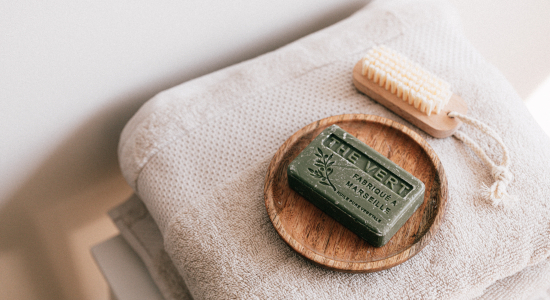Steps on Starting an Eco-Friendly Home

Photo by Karolina Grabowska
When preparing your home for the arrival of a new baby, you cover the outlets, bar the staircase with a baby gate, and put latches all over the cupboards. Making your home safe for your little one is also a great time to make it more eco-friendly. Eco-friendly homes have lower energy costs, use fewer chemicals, and set an example for kids on how to live a sustainable lifestyle. And it’s easier than you think. We’ve compiled some ideas for how to make your home more eco-friendly and create a maintainable, sustainable lifestyle for your family.
1. Create a recycling center at home
Designate an area of your kitchen with clearly labeled, different-colored recycling containers. By making recycling effortless, it will be natural for every family member to sort recyclables rather than throw everything into the trash. As your little ones grow, make recycling a family project by asking children to help you take out the recycling and rewarding them for their participation. Recycling will naturally become a part of their lifestyle.
2. Buy LED lightbulbs
LED lightbulbs produce 90% more efficiently than traditional incandescent light bulbs, according to Energy Star. Requiring no extra effort from you, switching to LED will help you save on energy costs and is great for the planet.
3. Use natural cleaning products
Mums know little ones love to put everything in their mouths. Ditching toxic chemicals will make your home safer for little ones and pets, and also reduce the amount of chemicals released into the environment. You can also try creating DIY cleaning products, they often require ingredients you already have on hand like lemons and vinegar.
4. Rent or buy pre-loved clothing
For little ones that quickly outgrow their old clothing, consider buying pre-loved garments or organizing a swap with other mums in your local area. It’s also a great way to meet mums with similar-aged kids. For mums and expecting mums, we create fashionable, sustainable clothing that you can wear for years or rent for six months. You can find them here: WO-MUM
5. Use recyclable bags
Put recyclable bags in your trunk or purse so you’re never empty-handed at the grocery store. By reducing your consumption and switching to reusable bags, FactoryDirectPromos estimates you can save 500 single-use bags in just one year. You can get little ones excited by purchasing reusable bags featuring their favorite characters.
6. Buy plants
In addition to being beautiful, plants improve the air quality of your home by reducing pollutants in the air. Make gardening a family activity and involve your little ones in caring for plants as they get older. If you have the space, create a garden and let your kids decide what to grow. Households of all sizes can have fresh herbs on hand which will add extra flavor to meals and teach kids about growing things they can also eat.
7. Use reusable diapers
There are so many benefits to using reusable diapers besides the obvious, reducing waste. Cloth diapers are more breathable which helps babies with skin conditions like eczema and are pesticide and fragrance-free. They also allow the baby to feel when the diaper is wet which may encourage early potty training. If reusable diapers aren’t an option for you right now, consider purchasing biodegradable diapers instead.
8. Shop organically
Support local farmers by eating food that is in season, and locally grown. Find a farmers' market in your area to buy organic products that taste better and support your local economy. You can also visit local farms to pick berries or apples in season and teach your little ones where food comes from.
9. Compost food waste
Composting is a great way to teach your little ones about food, food scraps, and science. You can set up a compost bin in your garden or on your balcony, it’s an excellent way for your kids to visualize food waste. Composting worms make sustainable, low-maintenance pets. If your flat is too small or worms are not your thing, check if there’s a community composting bin in your area or if your local farms accept compost donations.
10. Use a programmable thermostat
By installing a programmable thermostat you can modify the temperature of your home depending on your schedule and turn off the heat or air when you are away from home. This will help you save on heating/cooling bills, and can easily be managed from your smartphone.
SOURCES:
https://ionsolar.com/20-ways-to-make-your-home-more-eco-friendly/
https://lomi.com/blogs/news/how-to-compost-in-an-apartment
https://www.medicalnewstoday.com/articles/327289#health-benefits